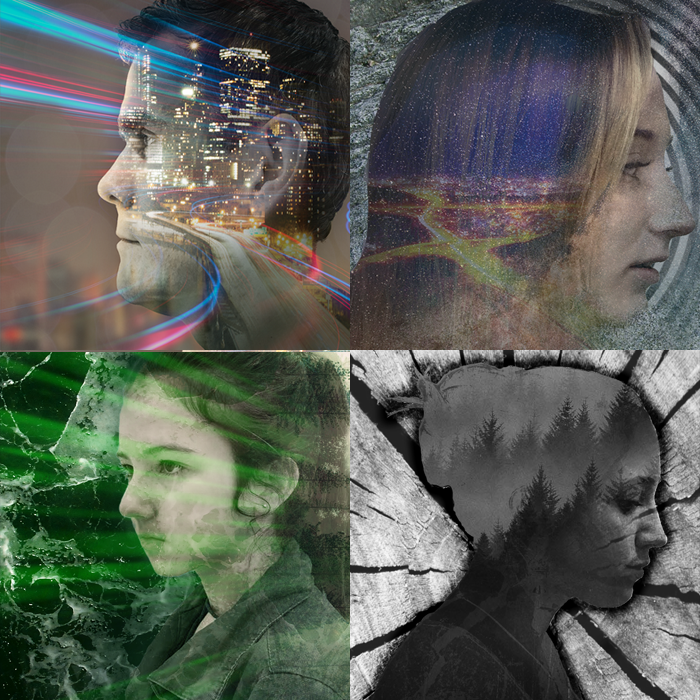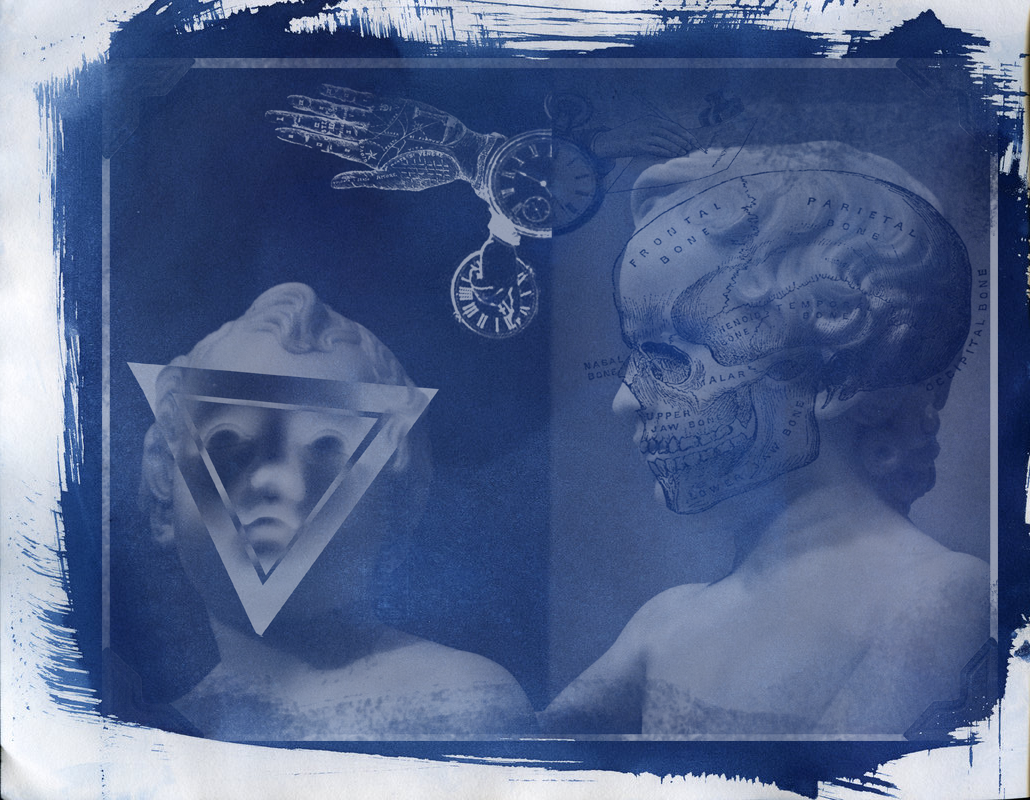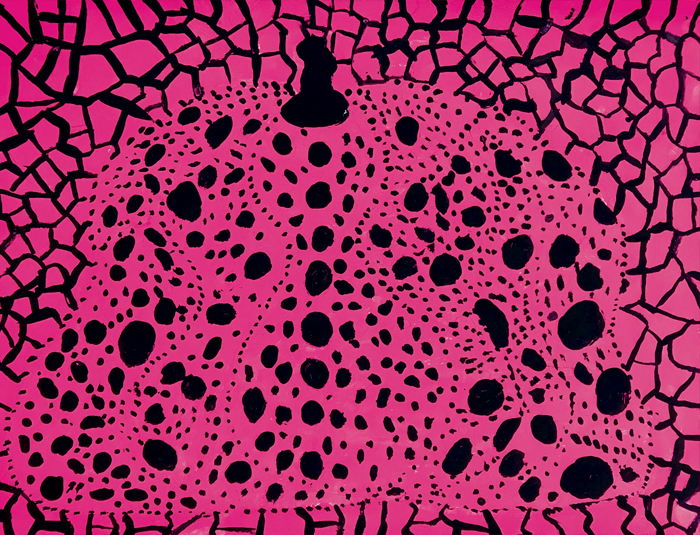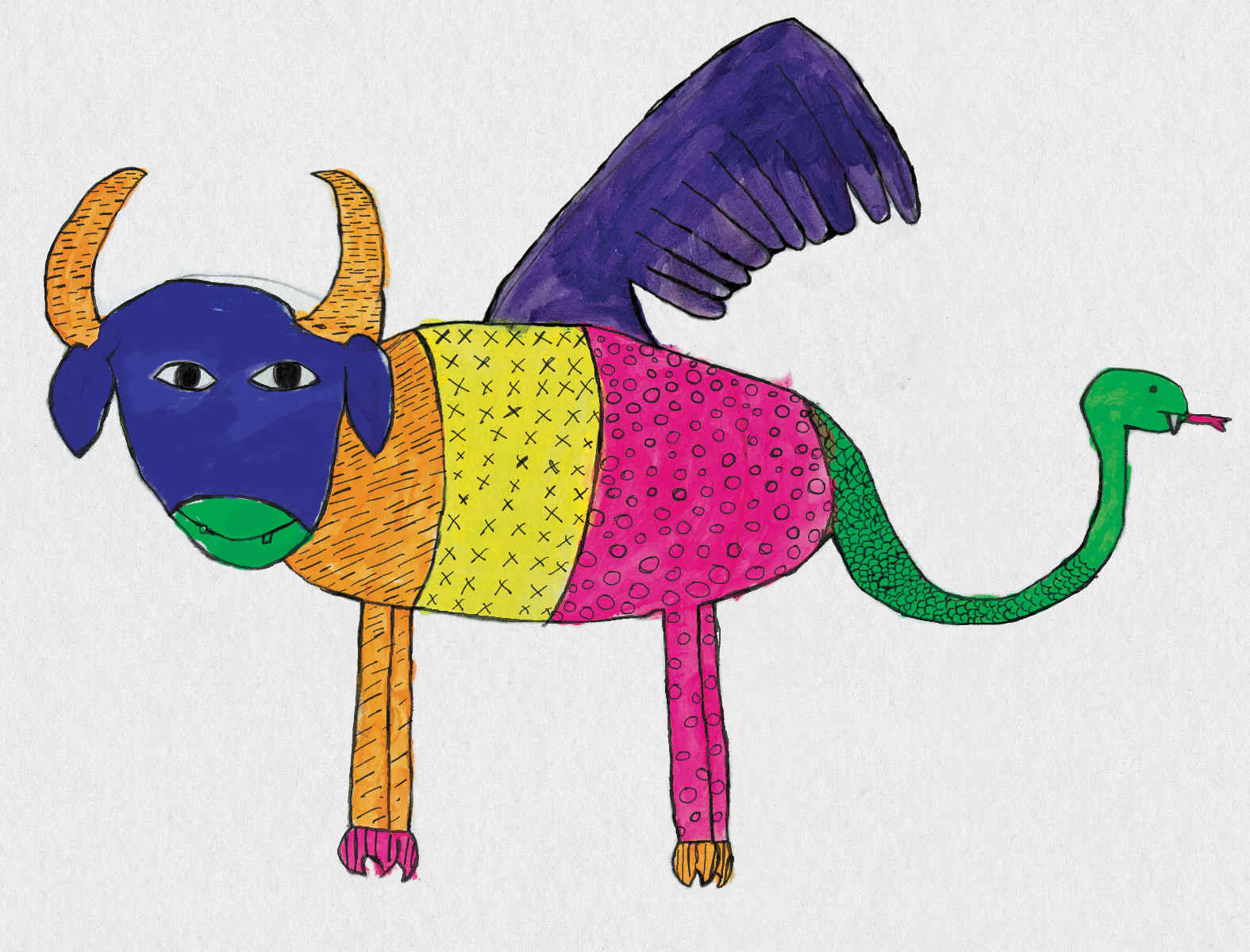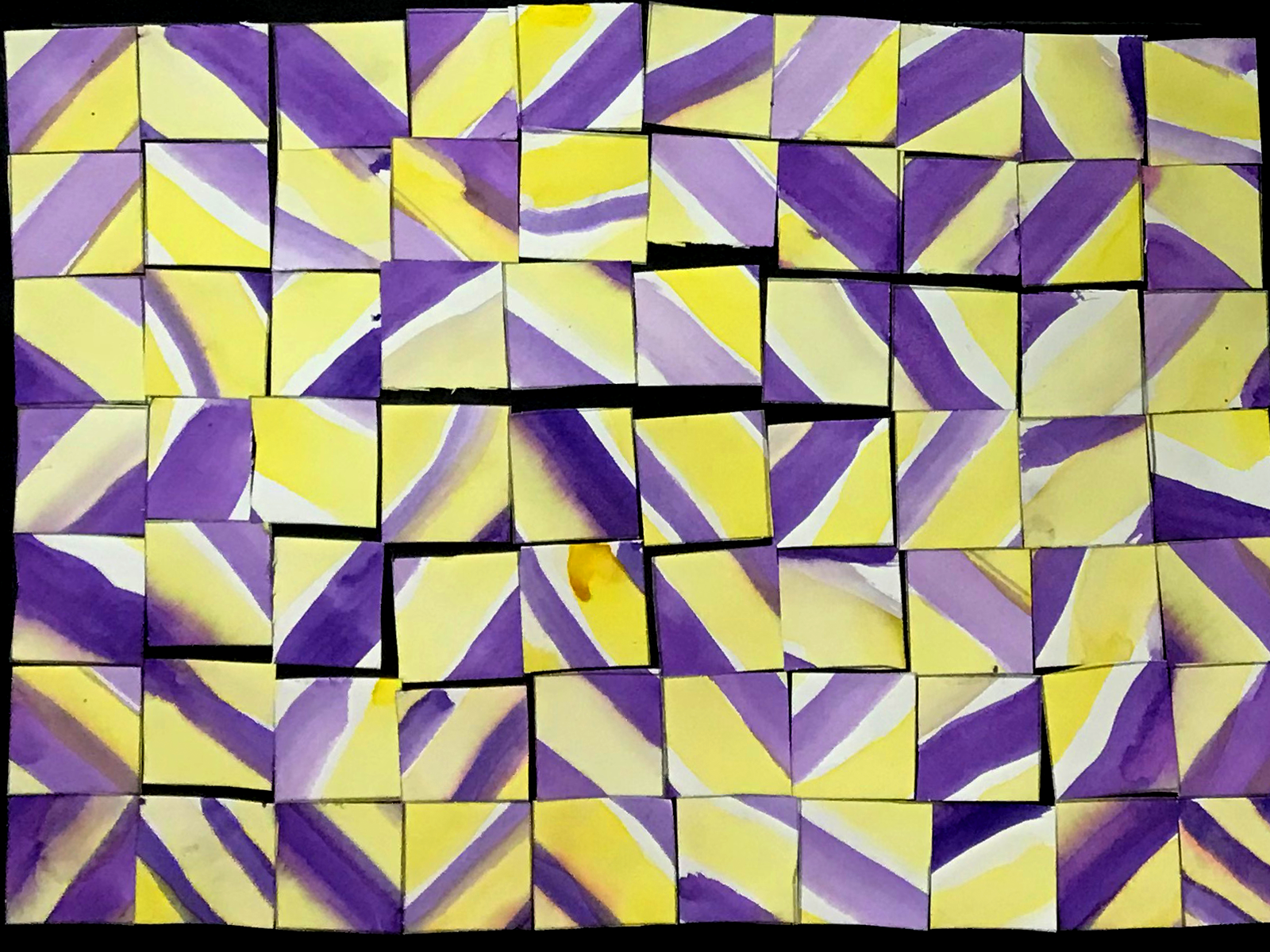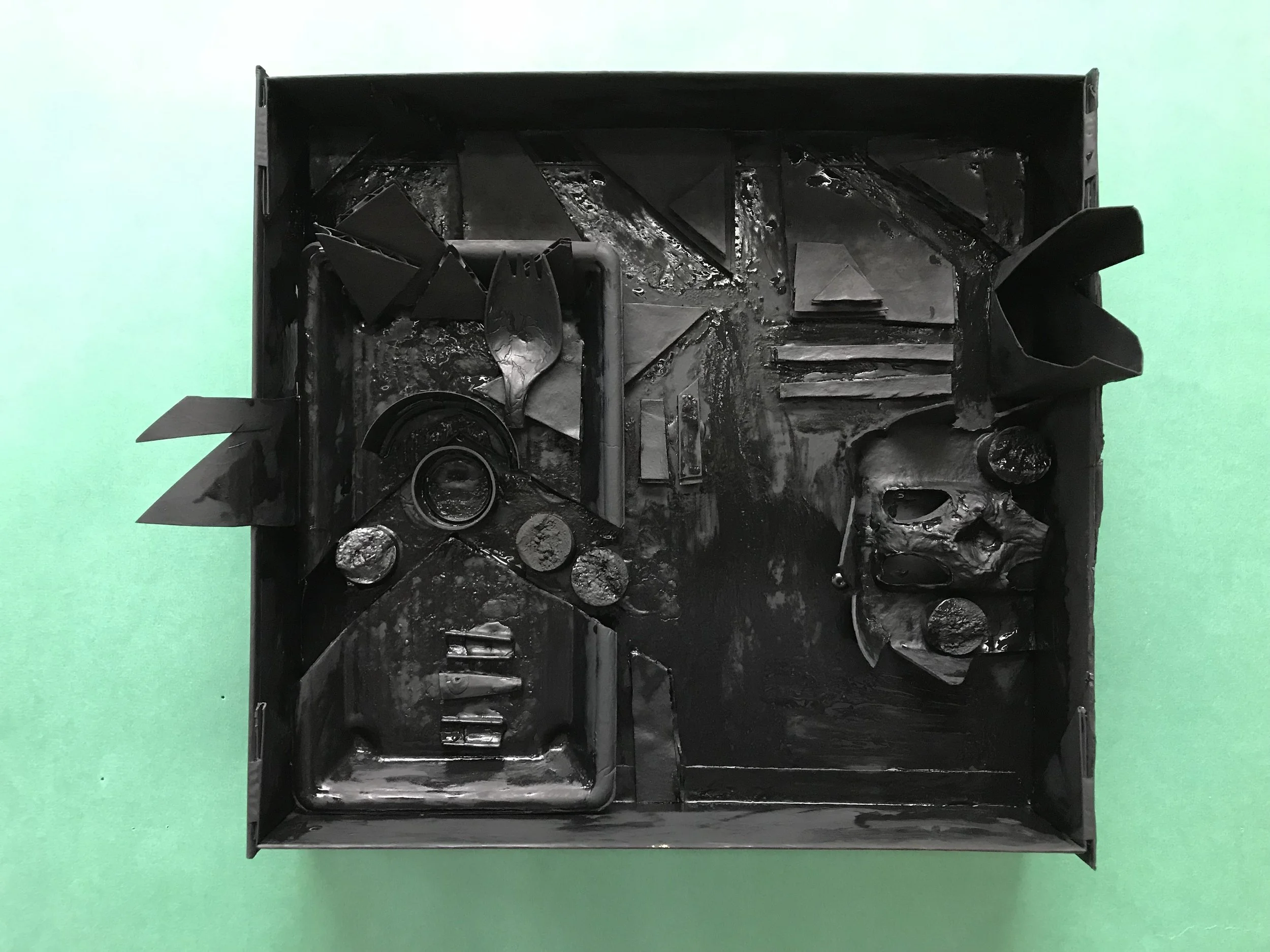lessons
These are a few examples of lessons I have taught. Lessons are presented here in abbreviated form but are available in more detail upon request.
DouBLE EXPOSURE SELF PORTRAITS
Grades 10-12
How and why are images manipulated, both traditionally and digitally? How is meaning derived in imagery? What constitutes a self-portrait? Does a self portrait need to resemble the author? How can we combine images to create a specific narrative? How does meaning change when images are integrated with other images? For this High School Photography class, we explored ideas of identity and self-portraiture. Using Photoshop and a double exposure technique, we explored how meaning can be derived from context and the juxtaposition of images. We looked at some surrealist photographers like Man Ray and Maurice Tabard, who used a double exposure technique to create unnerving images that referenced a dream-like state, tapping into the unconscious. Students began with a self portrait taken in profile and juxtaposed their image with images they selected to create a narrative specific to their personality or background.
Cyanotype Collages
Grades 10-12
This lesson is a mix of old school and new school. Students draw on past knowledge to explore a different way to print a photographic image. Students will integrate modern photography, digital image manipulation and one of the original techniques used to print photographs. Students will combine an original photograph with Victorian clip art and/or other collaged elements to create a photographic collage that they will print as a cyanotype. Final pieces are evaluated on composition, creative use of elements, and ability to develop narrative. Students will write a paragraph to accompany their print. This paragraph can be descriptive or lyrical but should help illuminate their print somehow.
Kusama's pumpkins
Grades 4-6
How can we create a provocative, complex image by combining multiple simple shapes and forms? How can we create tension between geometric and organic forms in order to engage the viewer? Can limitations (using only 2 colors /simple shapes) foster creativity? How do artists create a signature style? Students will be asked to develop their painting skills, working in a style that can be precise without being overly complicated. We will focus on building complex images out of simple shapes and also look at how pattern can function in a work of art—how it may work to engage the viewer.
Gond Animals
Grades 3-5
How is nature represented in other cultures? What does Art say about a culture? What role to the Elements of Art (specifically, Shape & Color) and Principles of Design (specifically, Pattern, Repetition & Rhythm) play in making Art engaging? How can Art represent an artist’s personality? Students will explore the work of the Gond people of India and will interpret their specific style of representation by creating work in a similar format. Students will use unique shapes and colors and patterns to create fantastic flora or fauna. Students will do some self reflection and choose an item or items from the natural world that they feel represent their personality.
Color & Chance
Grades 2-3
How does color function in an artwork? We will briefly touch on the idea of making art that does not look like anything -- i.e. What is abstract art? We will look at the roles of planning and systems in art making. What is process? We will learn how to follow visual directions. The two main ideas students will focus on in this lesson will be color and chance. Color of course is one of the crucial elements of art. Students will be able to name primary, secondary, and complementary colors. Students will also look at the role of chance in art making by devising a system to create a color field painting.
Hokusai-Inspired Wave Print/Drawing
Grades 2-3
Let's explore different techniques to create images. What are some ways images were mass-produced in history? How did other cultures depict their environment and community? How does art help us feel like part of a community? What do we see in our daily lives that we would like to represent in our art? Students will be introduced to the work of Hokusai, in particular his Thirty-Six views of Mt. Fuji—focusing on his famous print The Great Wave off Kanagawa. Students will not carve their own linocut, rather I will provide a pre-carved (by me) outline of a wave similar to Hokusai’s which we will print. Students will then color in their waves and we will use a toothbrush and white paint to make the ‘spray’ of the wave. We will also use collage to add boats or some other object that can be found in the ocean. Since Hokusai was essentially depicting his world or community in his series, Students will also add something personal to their wave that represents them or their community. Finally, students will add a few Kanji characters to their print.
Mehndi-Inspired Ceramic Dishes
Grades 1-3
Why do we use symbols and patterns? Can a design have personal or cultural meaning? How does art help us feel like part of a community? Who are we and how can we represent ourselves through art? We will learn how to create a design on a ‘ceremonial’ object that represents both us and our community. Students will develop a symbol that represents themselves and as a class, students will vote on a symbol to represent the class. Ultimately, students will begin to understand how visual signifiers can be tied to both personal and cultural identity and how symbols might function within a community. Additionally, students will be introduced to a new art making process which will involve multiple steps, including: planning and sketching ideas, using tools, and creating 3D objects based on sketches. This unit will help students understand how art making can involve multiple steps from ideation to conception. Students will also work on their group skills as they collaborate on developing a class symbol. Furthermore, the class will begin to understand how technology can be used as a design tool as they use a 3D printer to create a custom tool to imprint their class symbol in each of their pieces.
Louise Nevelson inspired found object sculptures
Grades 3-6
How can we apply some of the same elements of art and principles of design that we use to create two dimensional art works to the process of creating art in three dimensions? How can we make art without color? How can recycled materials take on new meaning in the context of art? What does it mean to collaborate on an art project? Students will create a monochromatic sculpture from found objects which will allow them to focus on some of the elements and principles such as: form, texture, emphasis, balance and unity. Additionally, students will be asked to work collaboratively which should be a new experience for most and will begin to develop some leadership, decision-making, communication and conflict management skills.
